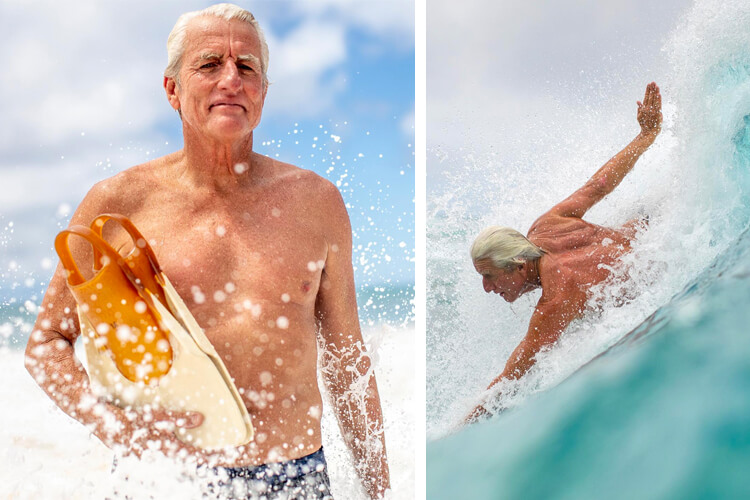Riding a wave with your body is an extraordinary experience. It's just you and the ocean. However, you can only do it with a good pair of swim fins specially designed for bodysurfers.
The world's most talented and experienced waterpeople often say that bodysurfing is the essence and the oldest form of wave riding. It's the human being in the purest of the elements: water.
Nevertheless, the art of gliding down a wave with your body requires the extra push only marine animals possess: fins.
There are notable differences between bodyboarding fins and bodysurfing fins. Some might think you won't notice the difference between both swim fin models, but that isn't absolutely exact.
Swim fins for bodysurfing should be comfortable and perfectly fit the rider's feet. On the other hand, you don't want them to be too big and too loose.
Modern molded rubber or silicone materials are lightweight and will adapt to small, medium, and large feet. If you opt for rubber, find models made from premium Malaysian rubber.
So, what are the main characteristics and features of a good pair of swim fins for bodysurfing?
- Short Blade Design: It helps maintain a proper kick and enhanced stroke while swimming and moving around;
- High-Quality Vulcanized Rubber Construction: It provides a good balance of durability and flexibility;
- Comfortable Fit: The fins should be able to adapt to any foot shape and feel almost like an extension of your body;
- Suitable for Any Age and Skill Level: The fins should be suitable for people of all ages and skill levels to use;
- Ideal for Bodysurfing, Bodyboarding, and Water Rescue: The fins should be specifically designed for these activities;
- Soft Rubber Construction: This can help make the fins more comfortable to wear and to last longer;
Comfort, Thrust, and Durability
Poor-quality swim fins will hurt your feet, toes, Achilles tendons, ankles, and calf muscles. Some of them will even cut your feet and wetsuit or let sand in.
That is why it is critical to learn how to choose bodysurfing fins.
The bodysurf fins should also float. If, for any reason, you lose a fin in the water, floating models will ensure you're safe, and you won't need to buy another pair.
Remember that, in bodysurfing, fins are a natural extension of your body.
Swim fins for bodysurfers have a few tweaks in design, too. For example, they're really compact, and a few models have no right or left foot difference.
Additionally, you need them to swim underwater and work in real-time with the wave as you draw the surf line with your whole body.
Here's our curated selection for the 2024 season.
DaFin Swim Pro
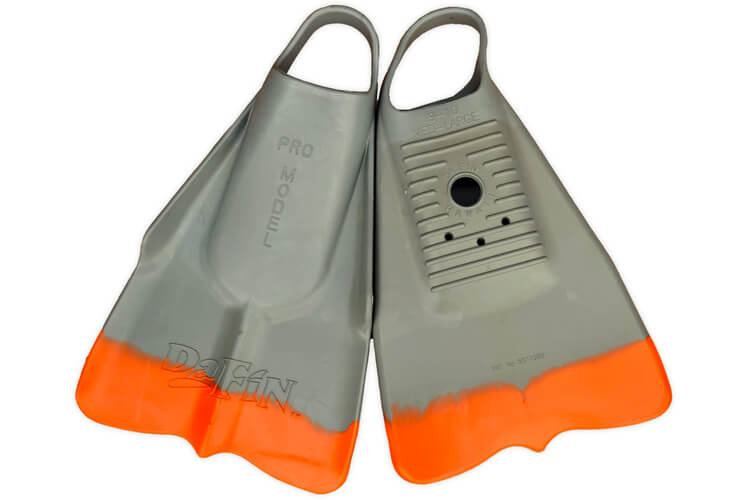
DaFiN Swim Pro is a type of swim fin developed and endorsed by professional watermen and waterwomen and used by the Hawaiian Lifeguard Association.
It is the only swim fin endorsed by the United States Lifesaving Association. It is also known for its comfort and power and is one of the lightest surf fins on the market.
Buy: Amazon.com
Churchill Makapuu
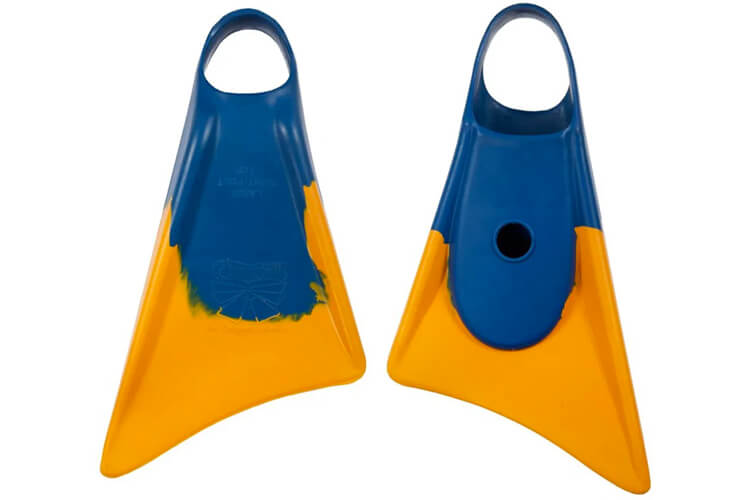
Churchill is a swim fin brand that has been in existence since 1936.
It is known for its quality, performance, and durability and has become standard equipment in performance bodysurfing and bodyboarding.
The Churchill Makapuu fin is designed to resemble a dolphin tail and is made of 100 percent rubber, which makes it float.
It is available in two versions: the standard Churchill Makapuu fin and the Churchill Makapuu PRO, which features a custom neoprene foot pocket, padding around the ankle strap, and a stiffer blade for more speed and quick thrusts.
The Churchill Makapuu are probably the most popular swim fins in the world. They provide unique power and acceleration.
Buy: Amazon.com
Hydro Tech 2
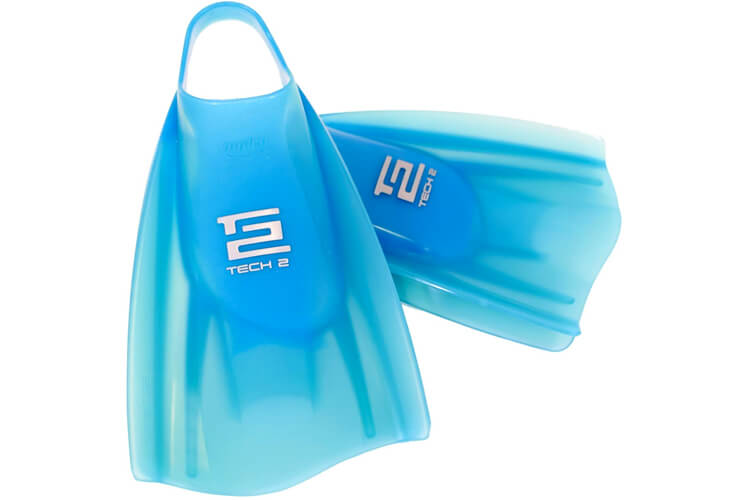
The Hydro Tech 2 are swim fins made from super soft silicone, which makes them comfortable to wear.
They have a v-rail design that provides maximum speed and traction and an ergonomic foot cavity for an ultimate fit.
They also have a non-slip tread and central vortex drainage that helps flush out sand and water.
The fins have an asymmetrical design based on the body's natural movement, which is designed to distribute pressure evenly across the foot and minimize fatigue.
They are also suitable for pool swimming and swim squads and have won the Australian Design Award.
They promise not to cause blisters. They're UV-proof and have minimal resistance to kick action.
Buy: Amazon.com
Mike Stewart Viper Flex
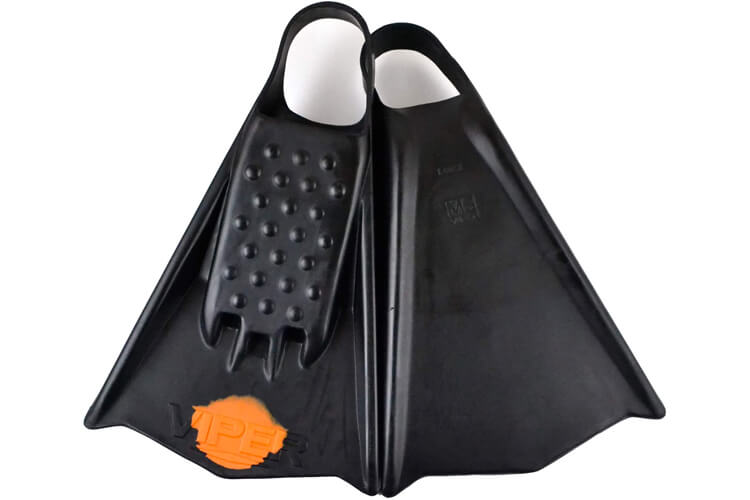
The Mike Stewart Viper Flex swim fins offer the same design as the yellow-dot MS Vipers, but they're made with softer rubber compounds.
The delta tail design enhances control and minimizes drag.
Buy: Amazon.com
DaFin Mark Cunningham
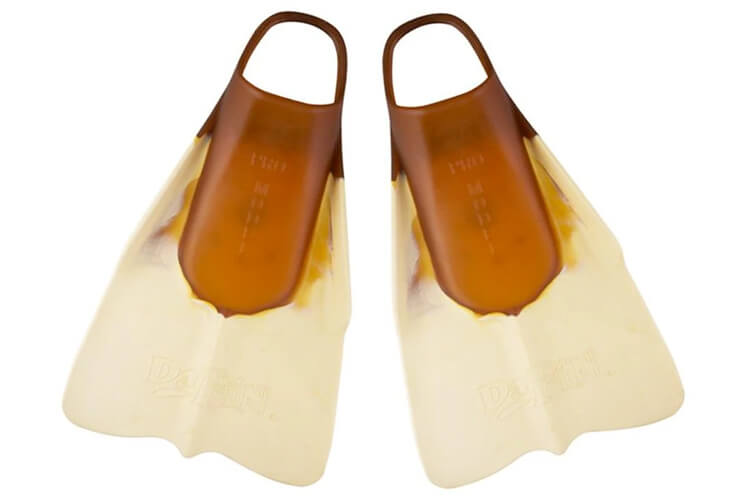
Australian bodysurfing pioneer Andy Cochran developed the pro signature swim fin model with inputs from world-renowned watermen Mark Cunningham and Brian Keaulana.
It's a very comfortable and robust pair of swim fins, and there is no difference between the left and right foot.
Buy: Amazon.com
Voit Duck Feet
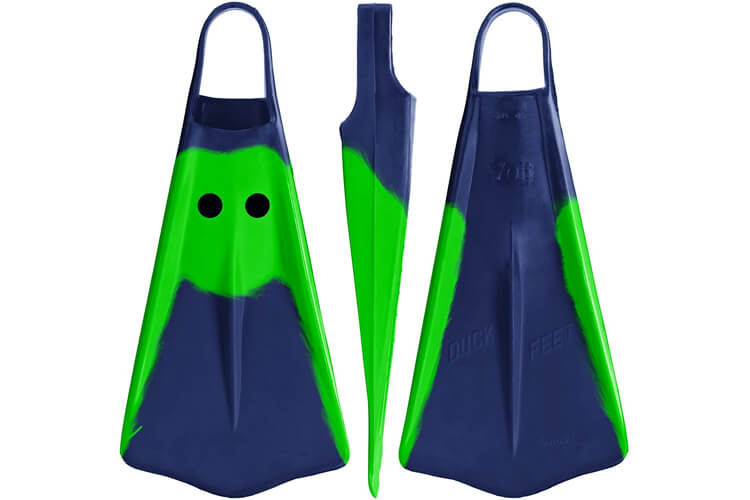
The Voit Duck Feet swim fins are a legendary model constructed from dual-density rubber.
They were developed in 1953 and have remained symmetrical in all propulsive planes. Get instant response, thrust, and greater propulsion with minimum effort.
They are known for their long and stiff blade and feature a soft rubber foot pocket.
They are designed for greater propulsion with minimal effort and are full-floating.
Buy: Amazon.com
DaFin Pro Signature - WSL
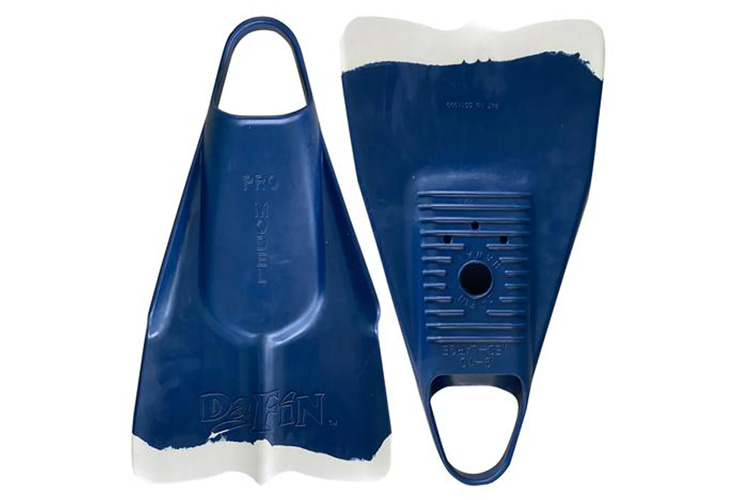
The WSL fin, a collaboration between DaFin and the World Surf League (WSL), is a specialized swim fin designed for bodysurfing, bodyboarding, and swimming.
It recognizes the crucial role of lifesaving in surfing by contributing proceeds to support water patrol groups essential for WSL tours.
Engineered for both comfort and power, this pair of fins strikes a perfect balance, ensuring users can wear them for extended periods without discomfort while achieving efficient propulsion through the water.
This model, in particular, is endorsed by the Hawaiian Lifeguard Association and the United States Lifesaving Association and used by professional watermen and waterwomen worldwide.
They were designed to float in saltwater, making them easy to retrieve if accidentally dropped or lost during use in the ocean.
Constructed using lightweight materials, including high-quality natural rubber, the fins are convenient for travel and ensure durability and performance.
With an ambidextrous design, the DaFin WSL Pro Signature pair can be worn on either foot.
Buy: Amazon.com
Viper V-5
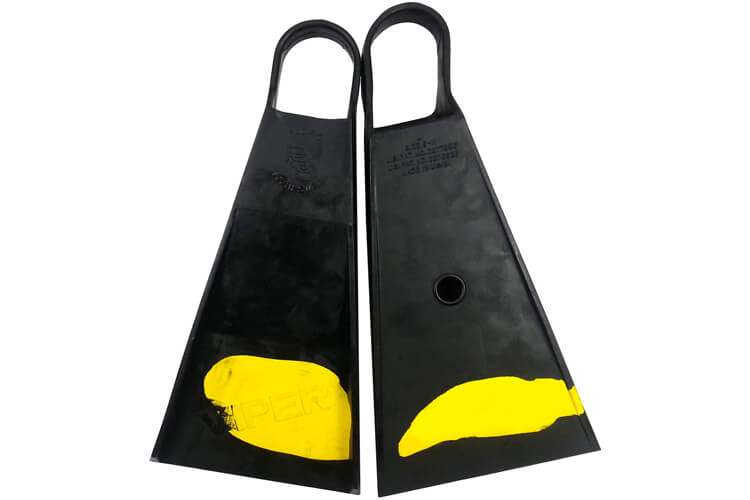
Viper V-5 is made of synthetic rubber, which is approximately 30 percent lighter than natural rubber, and is designed to be an all-purpose fin for activities such as bodyboarding, bodysurfing, and lifeguarding.
The Viper V-5 has a five-blade design and features vertical side rails that are slanted down to a narrow tip.
It is known for its excellent acceleration, maneuverability, tracking, and burst speed and has less blade surface than the V-7 model, which allows for increased speed and a faster kick.
The Viper V-5 is available in two versions: the standard Viper V-5 and the Viper V-5 FLEX, which is made with a slightly softer material for more comfort and an easier kick.
Viper V-7
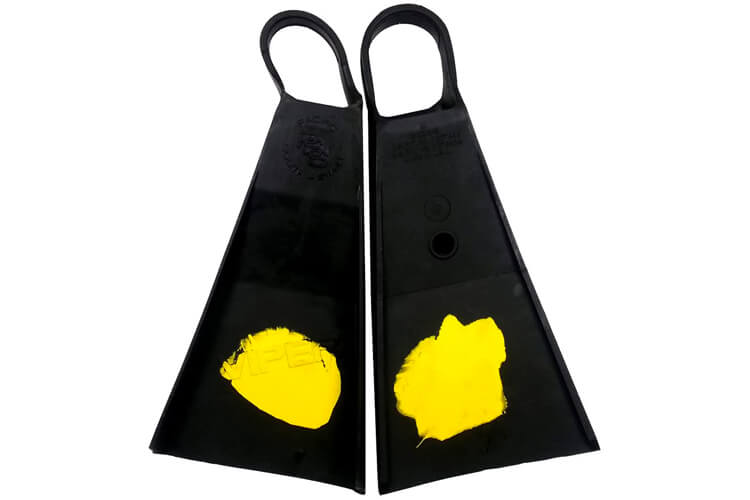
Viper V-7 is a swim fin model designed for bodysurfing and is popular with lifeguards.
The fins are made from synthetic rubber, which is approximately 30 percent lighter than natural rubber.
They feature patented vertical rails designed to generate maximum thrust and control by channeling water down the blade and off the tip.
The large blades and full-length raised side rails provide maximum power for big waves.
The Viper V-7 fins were originally designed by Fred Simpson in 1980 and are the original length Viper surfing fins.
They are available in various sizes to fit different foot sizes.
Ally ERS4
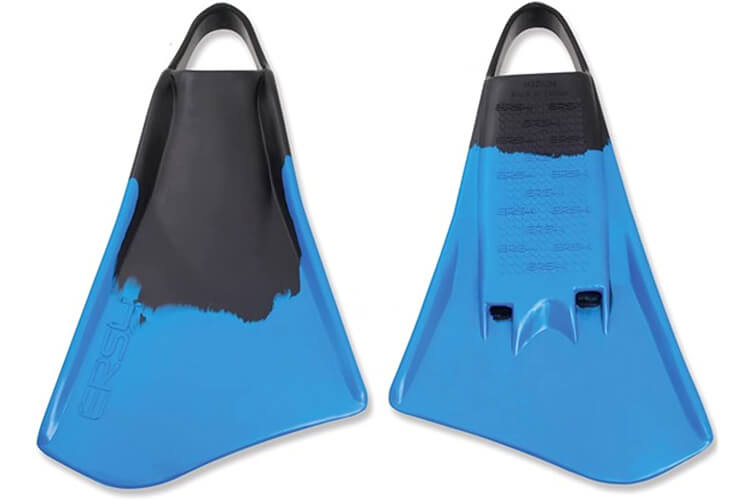
The Ally ERS4 swim fins feature a v-thermal ankle strap for locked-in comfort.
They float in salt water and have been designed to walk on slippery surfaces. In addition, drainage exit holes provide an easy exit for sand and gravel.
The Ally ERS4 is a high-power and comfortable pair of fins made of 100 percent natural gum rubber and are individually shaped for extra rider comfort.
They are known for their power and performance.
Kpaloa
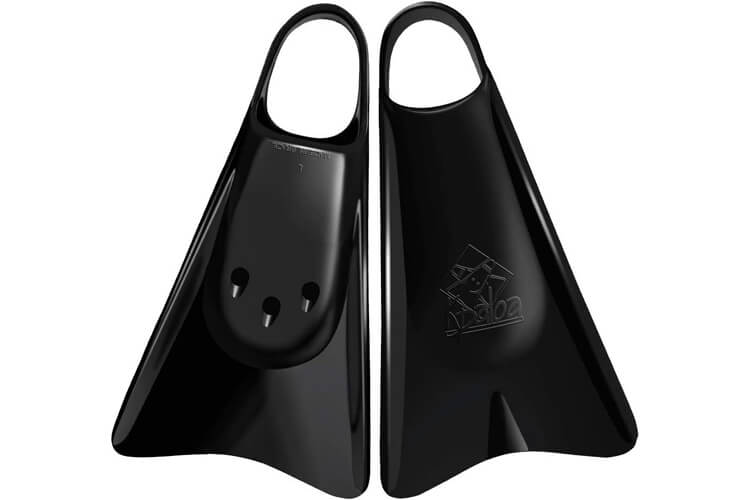
Kpaloa is one of the iconic bodysurfing fin manufacturers.
The original rubber model was hydrodynamically designed for surface leg kicks and will provide you with all the flexibility, hardness, and density you need for your water sessions.
Three drainage holes were strategically located to deliver maximum efficiency, avoid braking forces, and allow debris to flow.
These high-performance swim fins are made by a Brazilian company called Kpaloa.
The company was founded in 1983 and specializes in the manufacture of swim fins made of vulcanized rubber, which provides extreme comfort and performance.
Kpaloa swim fins are used by champions in various aquatic sports such as bodysurfing, swimming, and bodyboarding.
The Kpaloa Homem Peixe Flow Swim Fin is one of the swim fins offered by Kpaloa, and it is based on the original Kpaloa fin design but has a slightly stiffer and more rigid blade.
It comes in attractive color combinations and is made of vulcanized rubber.
The swim fins for bodysurfers review has been updated on April 9, 2024.
Words by Luís MP | Founder of SurferToday.com
